On View
Salute the Flag! 9 Patriotic Art Shows to See Across the US on the 4th of July
Happy Independence Day!
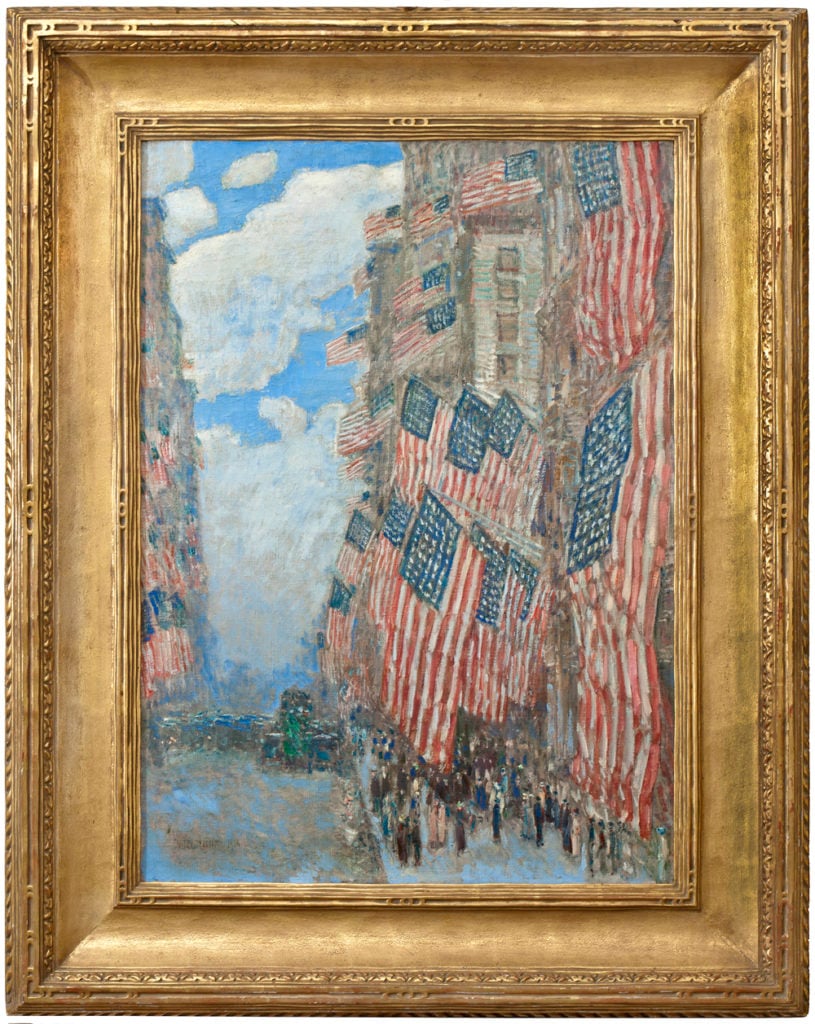
Happy Independence Day!

Sarah Cascone

For many Americans, the Fourth of July means fireworks and cookouts, a day spent in the sun at the beach—but if you’re looking for a more air-conditioned, historically minded way to spend the holiday, you might consider one of these patriotic art exhibitions taking place across the country. Happy Independence Day!

Reuben Law Reed, Washington and Lafayette at the Battle of Yorktown (1860–1880). Courtesy of Colonial Williamsburg Collections, gift of Abby Aldrich Rockefeller.
1. “America’s Folk Art” at Abby Aldrich Rockefeller Folk Art Museum, Art Museums of Colonial Williamsburg
As the Abby Aldrich Rockefeller Folk Art Museum celebrates its 60th anniversary, it showcases 60 highlights from its collection of American folk art, many of which demonstrate the creator’s pride in their country. From depictions of the bald eagle, long a national symbol, to works inspired by the Statue of Liberty and Abraham Lincoln, the exhibition makes clear that patriotism runs deep throughout American history.
326a West Francis Street, Williamsburg, Virginia. General admission $13. Opens July 1.
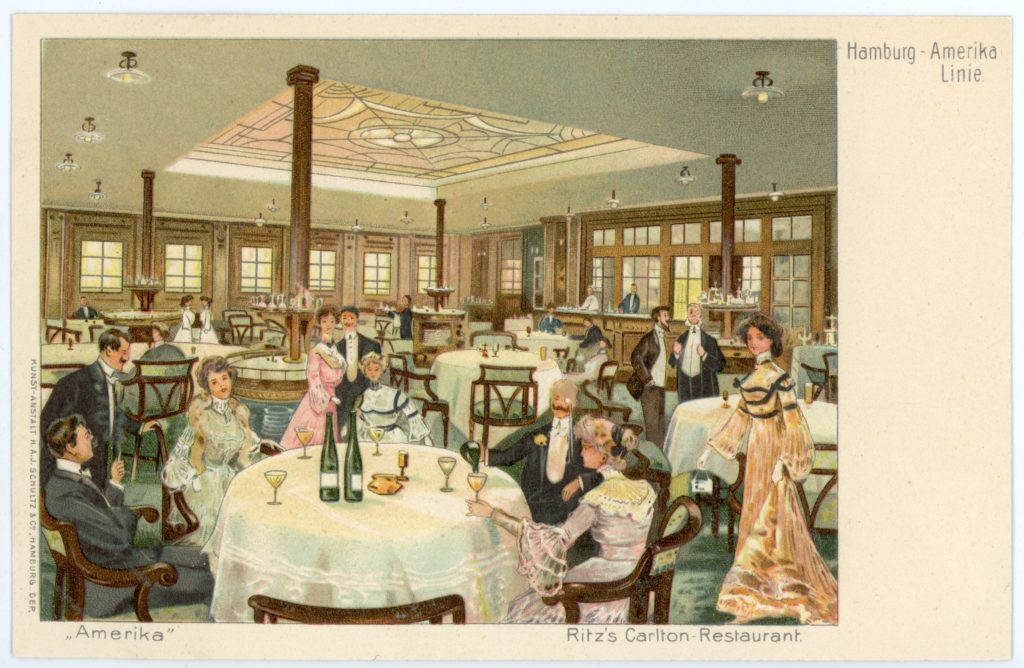
Kunst-Anstalt H.A.J. Schultz & Company, SS Amerika, Ritz’s Carlton-Restaurant (circa 1905). Courtesy of the Stanley Lehrer Ocean Liner Collection South Street Seaport Museum Foundation Collection.
2. “Millions: Migrants and Millionaires aboard the Great Liners, 1900–1914” at the South Street Seaport Museum
Immigration has played a vitally important role in our nation’s history, and the issue is more timely than ever in the current political climate. The South Street Seaport Museum takes a look at the history of ocean liners traveling to America, contrasting the conditions faced by those making the journey in first class and third class between the years of 1900 and 1914, when 13 million steerage passengers came to the US.
12 Fulton Street, New York. General admission $12. Through January 7, 2018.
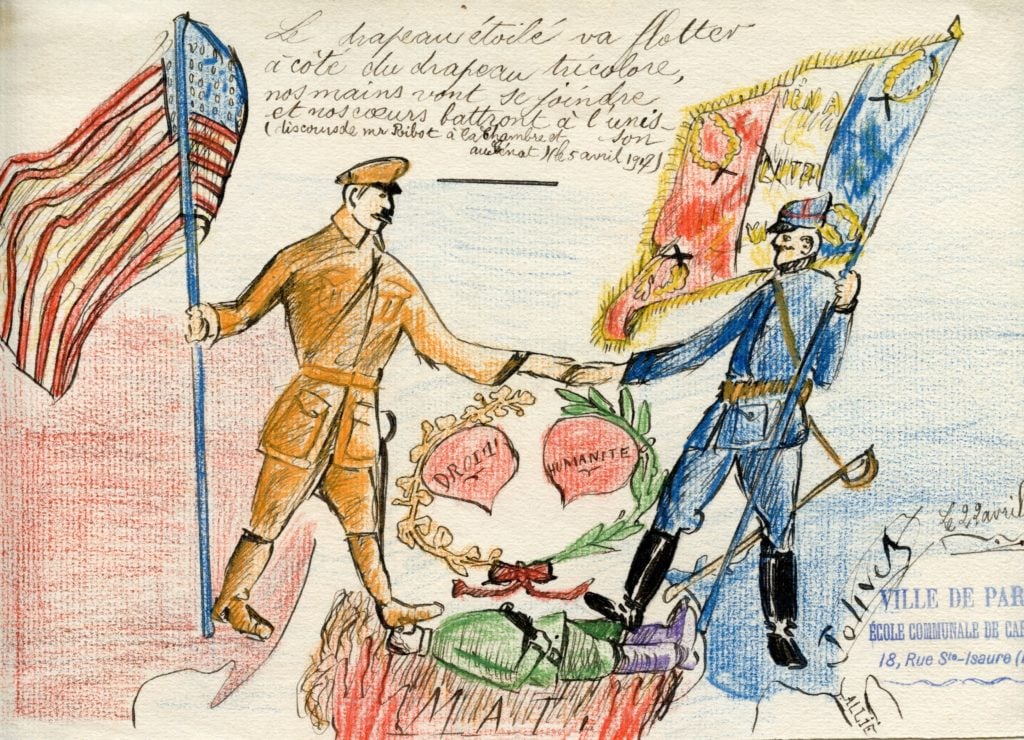
Jolivet Le drapeau (circa 1917), by a French schoolboy. Courtesy of Le Vieux Montmartre Historical Society.
3. “Vive L’amerique!: French Children Welcome Their American Ally” at the National WWI Museum and Memorial
See World War I through the eyes of French schoolchildren in 30 drawings made by students in Montmartre as the US entered the war in 1917. On public view for the first time ever thanks to Le Vieux Montmartre Historical Society, these drawings are just a sampling of the hundreds made during the war by these young artists, boys ages eight to 13, who were asked by their teacher to reflect on how the conflict affected their daily lives. In the exhibition, they have been paired with works created this year by Kansas City seventh graders, who were instructed to make work imagining the point of view of American soldiers arriving in France.
2 Memorial Drive, Kansas City. General admission $16. Through October 15.
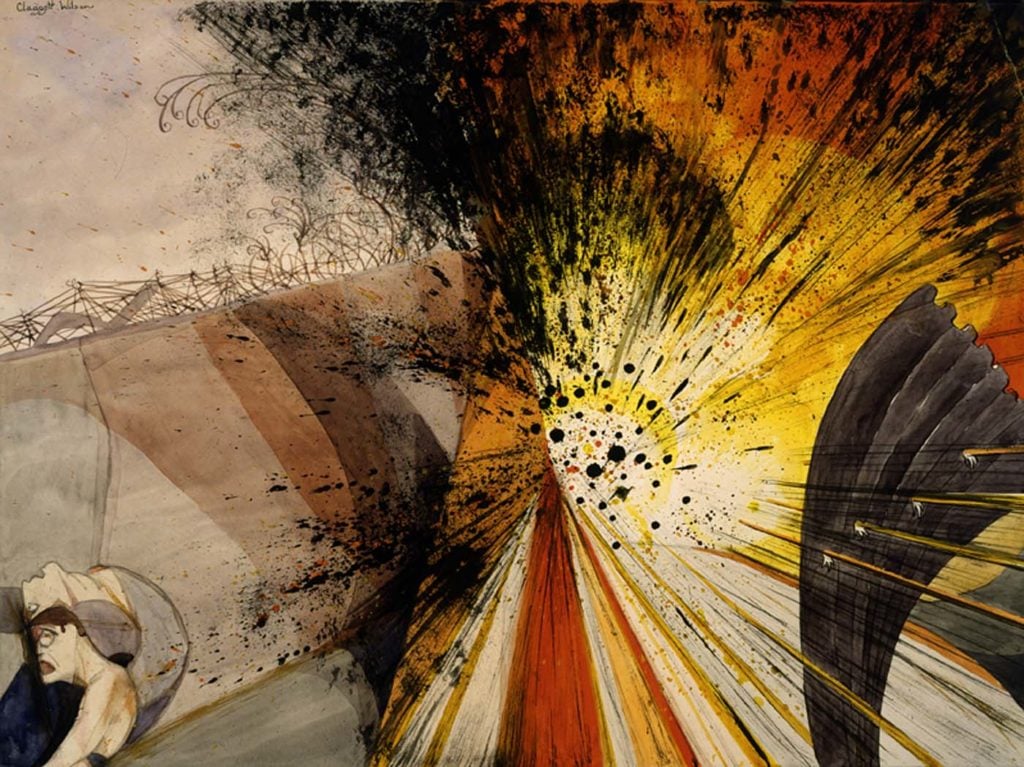
Claggett Wilson, Flower of Death—The Bursting of a Heavy Shell—Not as It Looks, but as It Feels and Sounds and Smells (circa 1919). Courtesy of Smithsonian American Art Museum, Washington, DC/Art Resource, New York.
4. “World War I Beyond the Trenches” at the New-York Historical Society
On the 100th anniversary of the US’s entry into World War I, this exhibition, organized by the Pennsylvania Academy of the Fine Arts, views the global conflict through the eyes of artists. Among the 55 featured works are examples by George Bellows, Georgia O’Keeffe, and Childe Hassam; John Singer Sargent’s Gassed, on display in New York for the first time.
170 Central Park West at Richard Gilder Way (77th Street), New York. General admission $20. Through September 3.

Walt Disney, left, presents the flying bull logo to Marine Corps Air Station El Toro commanding officer Col. William Fox in 1943. The logo was designed by Walt Disney and remained the base’s insignia until its closure in 1999. Courtesy of Paul Rodriguez, Orange County Register/SCNG.
5. “Walt and the Flying Bull” at the Palm Court Arts Complex, Great Park Gallery, Irvine, California
Kevin Staniec, the arts programmer for the city of Irvine, was intrigued by an old photograph of Walt Disney and Colonel William Fox at the El Toro Marine Corps Air Station, now a public park in Irvine. The two were holding a cartoon bull logo, an image that inspires the name of the organization’s current show, featuring a number of military insignia created by Disney and his animators. As it turns out, Walt Disney Productions came up with 1,200 designs for the American and Allied military forces during World War II, the majority from animator Hank Porter. Those historic works are paired here with contemporary interpretations of the bull from artists who have worked at Disney in recent years.
Sand Canyon Avenue, Irvine, California. Free. Through August 13.
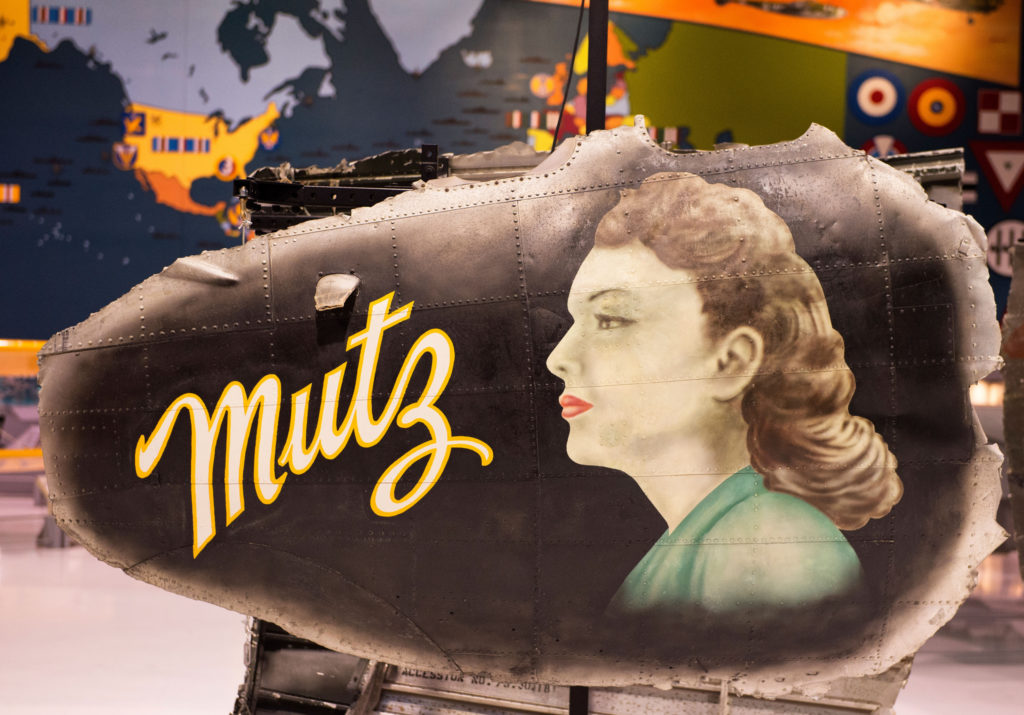
An example of World War II nose art from the collection of the Commemorative Air Force (CAF) headquarters in Dallas, Texas. Courtesy of the EAA Aviation Museum.
6. “Rare WWII Nose Art Exhibit” at the EAA Aviation Museum, Oshkosh, Wisconsin
For the first time ever, the Commemorative Air Force headquarters in Dallas has loaned out 39 examples from its collection of the original artwork that adorned many of the bombers and fighter aircraft flown during World War II. Perhaps unsurprisingly, many of these paintings, created largely by young men, depict attractive young women—the museum has cordoned off the most provocative examples in a special “Top Secret” section of the hanger.
3000 Poberezny Road, Oshkosh, Wisconsin. General admission $12.50. Through December.
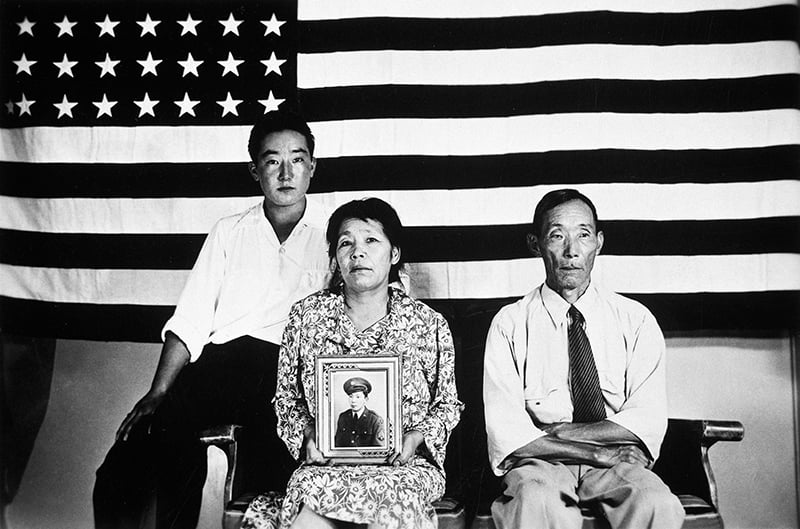
The Hirano family, left to right, George, Hisa, and Yasbei. Colorado River Relocation Center, Poston, Arizona, 1942. Courtesy of the FDR Presidential Library & Museum.
7. “Images of Internment: The Incarceration of Japanese Americans During World War II” at the FDR Presidential Library & Museum, Hyde Park, New York
Over 200 photographs by artists including Dorothea Lange and Ansel Adams illustrate a dark chapter in our nation’s history on the occasion of the 75th anniversary of the signing of Executive Order 9066, which led to the incarceration of 120,000 Japanese Americans during World War II. The exhibition includes large-format reproductions of several photographs, as well as a painting of the Topaz Internment Camp by Chiura Obata, an artist who was detained there. The work was presented by the Japanese American Citizens League to First Lady Eleanor Roosevelt, who came to disagree with President Franklin D. Roosevelt’s creation of the camps after she visited one in April 1943.
4079 Albany Post Road, Hyde Park, New York. General admission is $18. Through December 31.
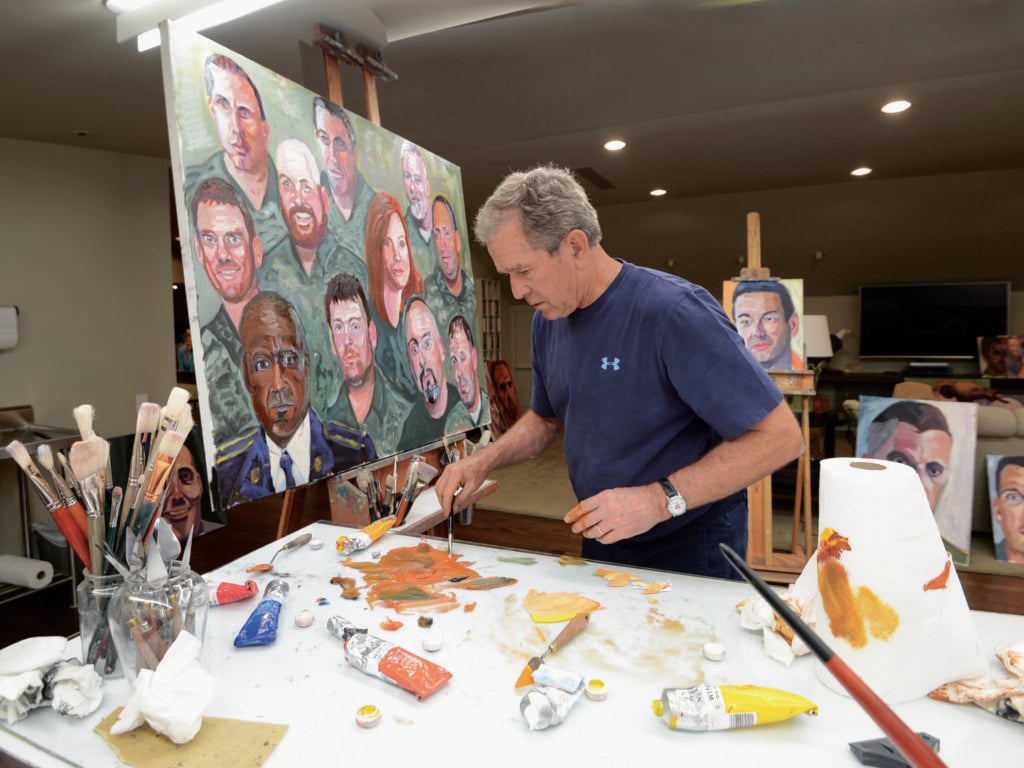
President George W. Bush painting. Courtesy of Grant Miller/George W. Bush Presidential Center.
8. “Portraits of Courage: A Commander in Chief’s Tribute to America’s Warriors” at the George W. Bush Presidential Center, Dallas
Former president George W. Bush has become quite the artist. For his second solo show, he has chosen to honor members of the military who served under him in Iraq and Afghanistan following the 9/11 attacks. Bush’s paintings offer surprisingly empathetic portrayals of the men and women who have sacrificed so much for their country, and have been interpreted by some as a sign of his atonement for embroiling the country in wars in the Middle East. Proceeds from the show benefit the George W. Bush Institute’s Military Service Initiative, which supports veterans as they make the often-difficult transition to civilian life.
Southern Methodist University, 2943 SMU Boulevard, Dallas. General admission $19. Through October 1.
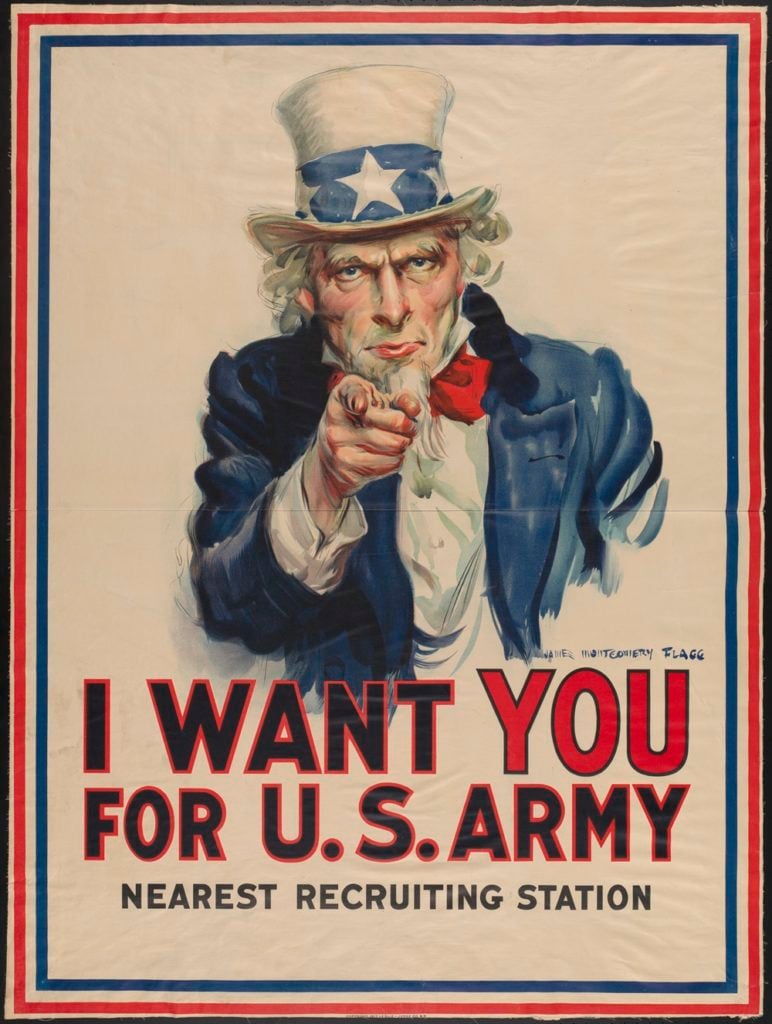
James Montgomery Flagg, I Want You for U.S. Army (circa 1917). Courtesy of the Museum of the City of New York, gift of John W. Campbell.
9. “Posters and Patriotism: Selling WWI in New York” at Museum of the City of New York
When the US entered World War I a century ago, New York City artists and illustrators became part of the war effort. But in addition to showcasing posters, magazines, and other wartime propaganda designed to pull at American’s patriotic heartstrings, this exhibition also features work of dissent, from those who questioned the conflict.
The Museum of the City of New York, 1220 Fifth Avenue at 103rd St, New York. General admission is $18. Through October 9.